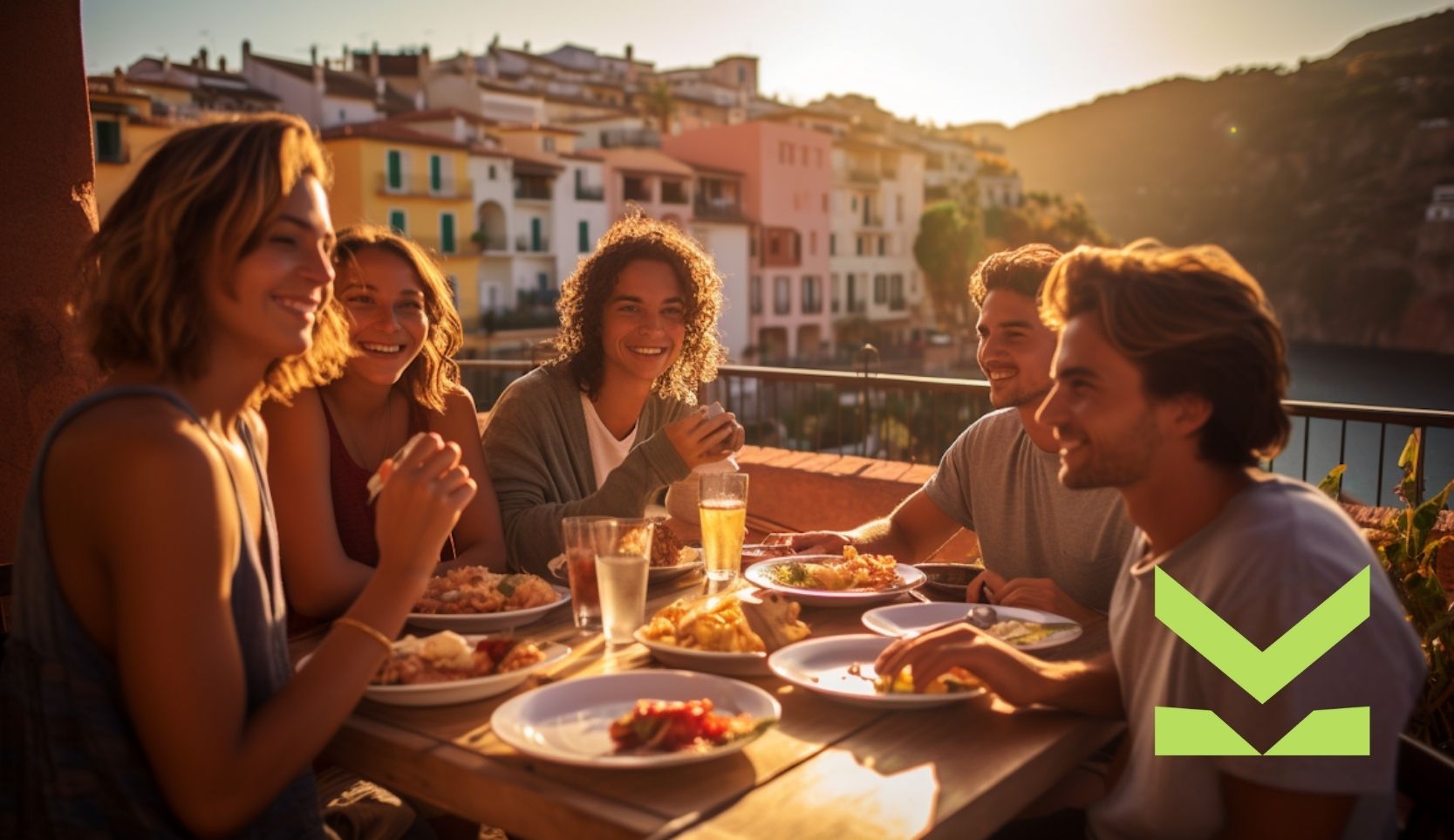The Venezuelan pork leg is much more than a dish. It is a symbol of family reunionDecember, of hugs around the table and the unmistakable smell that pervades the house as it bakes slowly for hours.
For the Venezuelans who now live outside, especially in Europeprepare a hind leg has become a way to keep tradition alive and feel closer to home.
But of course, the question arises: How can you make that pernil when you can't find the same ingredients as in Venezuela? Can you achieve the same Christmas flavour with what you can find in European markets? The answer is yes, with some adjustments and a lot of love.
In this article we bring you a comprehensive guide to prepare Venezuelan pernil in Europewith tips on what cuts of meat to look for, how to adapt traditional rubs to what you find in the supermarket, and the step-by-step recipe for your Christmas table preserving all the Creole essence, even thousands of kilometres away from Caracas or Maracaibo.
Pernil in Venezuelan tradition
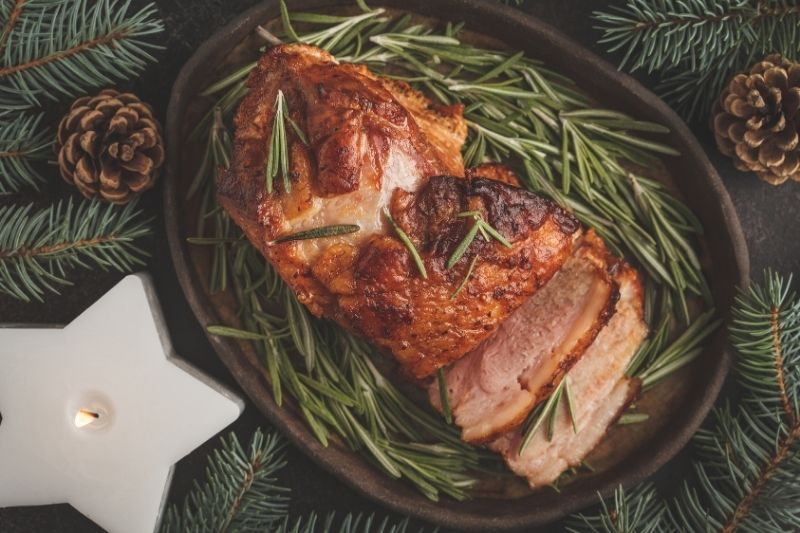
In our culture, the Venezuelan pork leg is the undisputed star of the Christmas festivities. It is served with hallacas, hen salad and ham bread, forming that Christmas dish that makes any Venezuelan abroad sigh.
The secret is in the marinade with a mixture of garlic, onion, sweet chilli, paprika, spices and citrus hints which, after hours of marinating, permeate the meat until every bite tastes like home.
At Venezuela it is common to use a whole pork leglarge, 5 to 8 kilos. In Europe, however, getting that exact cut can be tricky, but there are very similar alternatives that work perfectly well.
What cut of meat to look for in Europe?
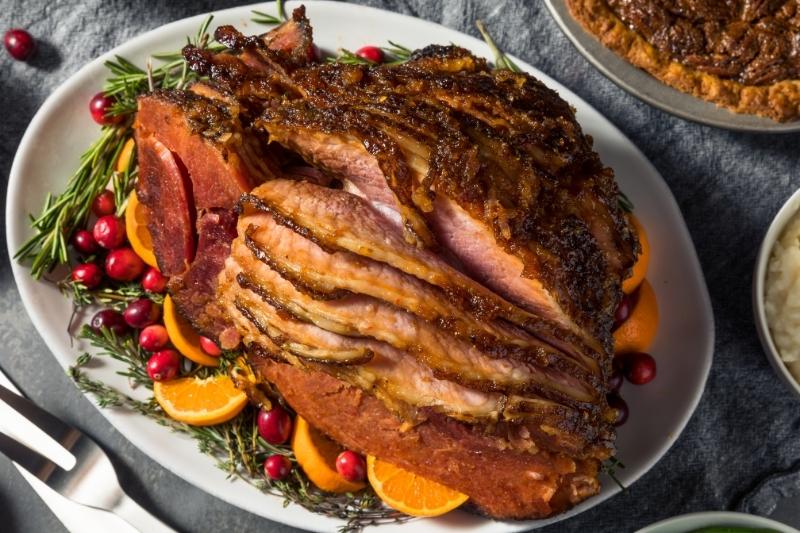
In the supermarkets y butchers European it is rare to find a hind leg whole as we know it. But equivalent parts are available:
- Pork Leg (Pork Leg or Fresh Ham): is the closest option to the traditional hind leg. At Spain they call it "leg fresh" o "ham fresh"and is available in butcher's shops or large markets.
- Pork Shoulder (Paleta): slightly smaller and fattier, but very juicy and delicious. Ideal for small families.
- Boneless cuts: at France, Italy o Germany are boneless pieces that are easy to handle and fit into smaller ovens.
The important thing is that the piece has some fat and skinso that during cooking it retains juiciness.
The basic seasonings of Venezuelan pork leg
Here comes the magic: the marinade. Although in Europe is not always achieved sweet chilliWe can adapt with what we have. For a Venezuelan pork leg authentic, these are the basic ingredients you will need:
- Garlic (fresh or in paste).
- Onion.
- Red pepper.
- Sweet chilli (if you can't get it, you can use a little red Italian pepper or yellow paprika, for sweetness).
- Orange (ideally sour, but if not, mix sweet orange juice with a little lemon).
- White wine dry
- Oil olive or vegetable oil.
- Salt, black pepper, cumin and oregano.
- A touch of mustard and Worcestershire sauce (Worcestershire).
At Venezuela is usually liquefied and then injected or bathed in the hind leg with the mixture, leaving it to marinate overnight. On Europethe technique is exactly the same.
How to prepare it step by step
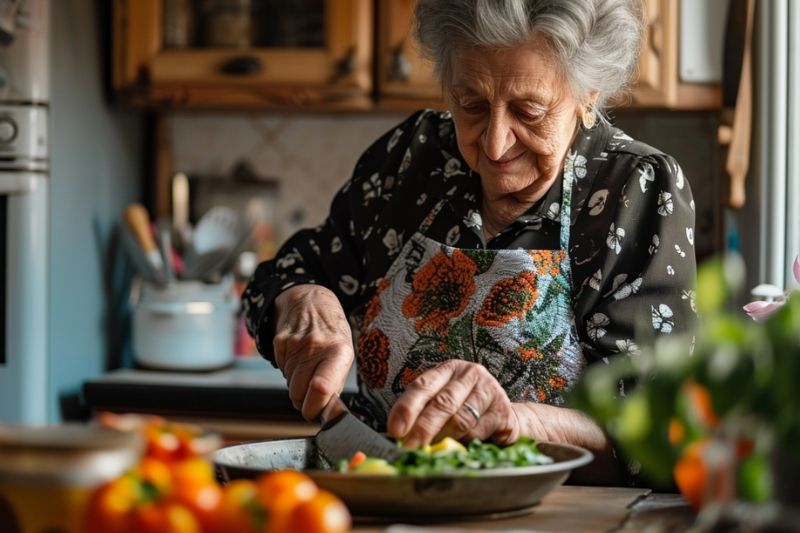
- Prepare the piece of meat: Wash the pork leg well and dry with absorbent paper. Make shallow cuts with a knife to allow the marinade to penetrate.
- Make the marinade: Blend garlic, onion, paprika, orange juice, wine, cumin, pepper, oregano, Worcestershire sauce and mustard. Adjust the salt.
- Marinate: baste the piece with the marinade, inject some of the liquid into the meat if possible, and leave to rest for at least 12 hours in the fridge (ideally 24).
- Bake: preheat the oven to 160°C. Place the pork leg on a tray lined with aluminium foil. Bake for a few minutes. 4 to 5 hoursdepending on size.
- Baste during cooking: every hour, uncover and baste with its own juices to keep it juicy.
- Final gilding: the latest 30 minuteswe turn up the temperature to 200°C and uncover so that it is well browned.
- Let stand before cutting: we let the leg rest at least 20 minutes before serving.
Cooking times
The time depends on the size of the workpiece: we calculate approx. 1 hour per kilo of meat a 160°C. If our pork leg weighs 5 kilos, we will need about 5 hours in the oven.
Tips to preserve the Christmas flavour
- If you can't get sweet chilli, use a little red pepper plus a pinch of sugar to recreate the sweetness.
- In some European countries sold "bitter orange"(especially in Spain and France). If we see it, we can't doubt it: it's perfect for the marinade.
- The Worcestershire sauce is usually found in any European supermarket, and gives a very Creole flavour.
- If we want to give it a more Venezuelanwe will accompany with pineapple slices or prunes on the oven tray.
A Venezuelan pernil with a European accent
The beauty of preparing Venezuelan pork leg at Europe is that each family finds its own tricks. Some use Mediterranean herbs such as rosemary or laurel. Others add a dash of sherry wine o de Porto. The result is always unique, but what doesn't change is the intention: to sit down with the family, sing bagpipes or carols, and cut that first juicy slice that tastes of Christmas.
For those of us who live far away, the hind leg becomes a emotional bridge. It is the recipe that connects us with our childhood, with the Christmas at grandma's house, with long tables full of cousins and uncles and aunts. Preparing it outside Venezuela is not only cooking, it is resisting oblivion, it is making homeland from the kitchen.
Essential companions
Even if you are in Madrid, Berlin o MilanIdeally, the Venezuelan pork leg be served with his inseparable companions:
- Hallaca: difficult, but not impossible to make outside. Frozen plantain leaves are increasingly available in Latin shops.
- Ham bread: at Spain y Portugal there are already Venezuelan bakeries offered in December.
- Chicken salad: easier to prepare, with potatoes, carrots, peas, apple and mayonnaise.
The pork leg as a symbol of unity
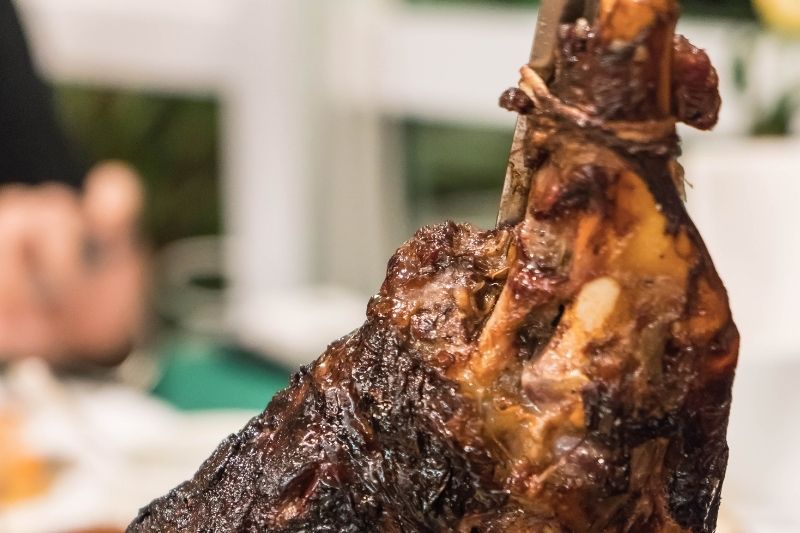
In the end, the important thing is not so much whether we use a identical cut or if the sweet chilli tasted exactly like the one in Venezuela. The important thing is that the Venezuelan pork leg lights a spark at every table, reminding us that, even though we are far away, traditions are still alive.
Make a hind leg in Europe is an act of love, a way of teaching one's children that the Christmas with its traditionshas a Venezuelan flavour, even if the snow falls outside or dinner is prepared in a small flat in Paris.
Prepare Venezuelan pernil in Europe is possible, delicious and deeply moving. The result will be a table full of Creole aroma and a special moment to share with the family.
Because in the end, the hind leg is not just a dish, it is a way of keeping our identity alive, of feeling that we are still united even though we are far away.
And if you want more recipes, tips and guides so as not to lose the Venezuelan essence abroad, at Curiara you will always find that space that connects with us, wherever we are.
Because keeping our roots alive, even far from home, is a way of moving forward together.
